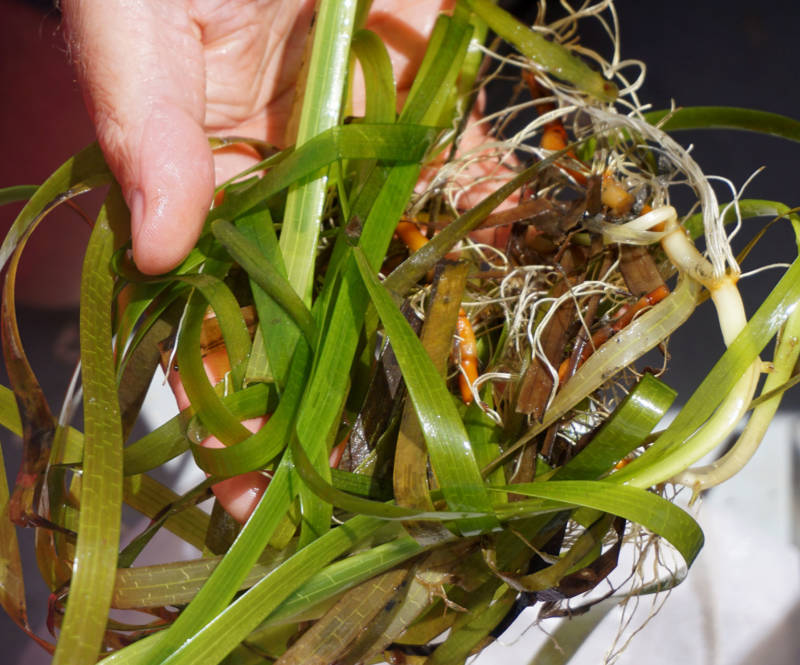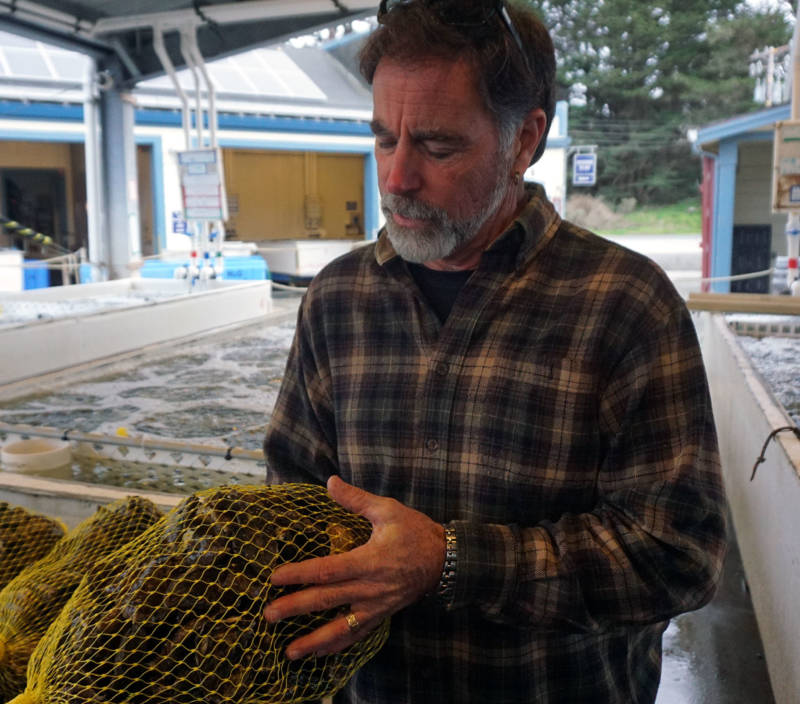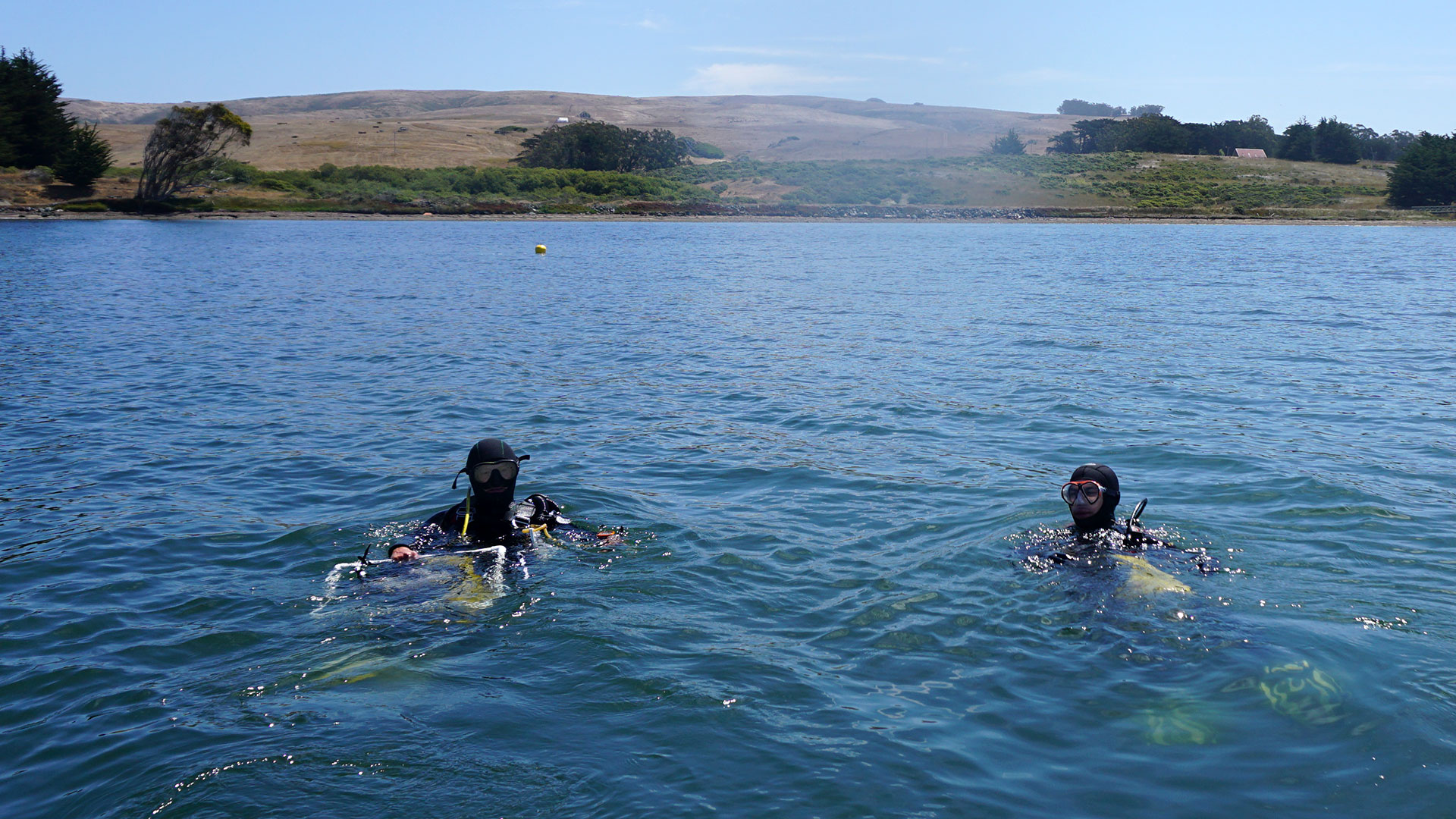
The impacts of climate change aren’t a distant threat for the Pacific shellfish industry. Acidifying seawater is already causing problems for oyster farms along the West Coast and it’s only expected to get worse.
That has one Bay Area oyster farm looking for ways to adapt by teaming up with scientists, who are studying how the local ecosystem could lend a helping hand.
“We need help,” says Terry Sawyer of Hog Island Oyster Company. “That ‘canary in a coalmine’ analogy drives me crazy, but that’s what we are.”
By that, he means that oysters are an “indicator species” on the frying edge of a changing climate.
Sawyer’s own natural habitat is on the mudflats of Tomales Bay, about 50 miles north of San Francisco, where his oyster operation is located. But a few years ago, he started going to climate change conferences, sitting next to scientists and policymakers.
“Carbon chemistry is incredibly sophisticated, complicated science,” he says. “I am definitely out of my element — out of my comfort zone. I’d rather be in shorts and no shoes.”
For Sawyer, these wonky affairs are a necessity. Like a lot of oyster farmers, he buys baby oysters from hatcheries in Oregon and Washington. But starting a decade ago, the hatcheries began having mysterious die-offs.
“The orders that we were getting – if we were getting them at all, they wouldn’t necessarily happen at the time or the size that we could take them,” he says.
Scientists eventually identified the main culprit: increasingly acidic seawater.

The Carbon Sponge
At least a quarter of the carbon humans put into the atmosphere from burning fossil fuels is absorbed by the ocean. It acts like a carbon sponge, but adding carbon to seawater makes it more acidic. Since the start of the Industrial Revolution, the oceans have become about 30 percent more acidic.
It’s harmful for animals that build shells, like oysters, and spells big trouble for the Pacific shellfish industry, worth more than $100 million.
“You don’t want to curl up in a fetal position,” says Sawyer. “You do want to say, ‘We’ve got to move on this and we need help.’”
Sawyer found some help by opening up his oyster farm to a team of scientists. Equipment monitors the water’s acidity in real time, part of a network run by UC Davis’s Bodega Marine Lab.
“That was a significant move: knowing what’s going on day-to-day, minute-by-minute,” he says. “And it’s also been proving the point. We have numbers you can’t argue with.”
Hog Island is opening its own oyster hatchery in Humboldt Bay, 200 miles to the north, to improve the reliability of the supply chain.
The oyster farm is also assisting with cutting-edge scientific research, focused on how oysters could get a boost from native plants in Tomales Bay.

The Acid Test
On a sunny morning, a team of scientists is scuba-diving in a shallow part of the bay, surrounded by thick, green seagrass, waving in the current.
“When you’re down in it, it really feels like you’re in a forest of seagrass,” says Kristy Kroeke, a marine biologist at UC Santa Cruz. “It’s quite long.”
This seagrass is a glimmer of hope for oyster farmers. Plants, whether it’s a forest or lawn, take up carbon dioxide and use it for photosynthesis.
“The plants under the water are doing the exact same thing,” Kroeker says.
The seagrass pulls the carbon out of the water, which makes it slightly less acidic.
“Essentially, they’re creating this little bubble of seawater around them that’s more friendly for animals that might be threatened by ocean acidification,” she says.
Kroeker is testing whether seagrasses could act as a buffer, protecting the oysters nearby.
She plants mesh bags of baby oysters in the seagrass bed, which she’ll be watching in the months to come. So far, the results look promising, but not necessarily the whole answer.
Seagrass can reduce acidification around it, but possibly only in certain locations or at certain times of year. More research will be needed, Kroeker says, but against a global problem, local approaches have a lot of potential.
“Can we use parts of nature that we already know are important,” she wonders, “seagrasses – to actually benefit people and protect them from some of these impacts?”
The approach is being studied around the world in different ecosystems, including near coral reefs, and using bigger marine plants, like kelp.
Eventually, it’ll be up to oyster farmers like Terry Sawyer to make the research work on the ground – or, in the water. He’s hopeful.
“From an aquaculture point of view, you bet I’m hopeful,” Sawyer says. “Maybe I’m being idealistic here, but we’re learning so much. We’re just at the tip of the iceberg on that.”
Original post: https://ww2.kqed.org/science/2018/